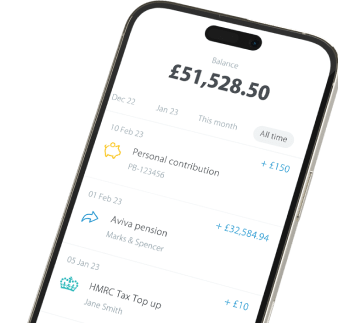It’s important you think about your pension savings. The State Pension isn’t enough for most people to live on, and the sooner you start thinking about a pension, the more money you’re likely to be able to save for your retirement.
The benefits of a private pension
As a self-employed person you can start your own self-employed pension to save money for when you stop working. You’ll usually be able to choose from several pension funds according to how you want to invest your money and how much risk you’re willing to take.
Although you won’t have an employer to pay into your pension in the same way those in permanent employment with a workplace pension do, a self-employed private pension will still bring the generous tax relief benefits that can make pensions more attractive than many other saving products.
For personal pension contributions, you get a 25% tax top up as a basic rate taxpayer and an additional 25% or 31% as a higher or additional rate taxpayer. This effectively means that for every £100 you save into your pension, as a basic rate taxpayer you’ll get £25 from the government, meaning that a total of £125 is paid into your pension. The basic amount is usually claimed by your pension provider on your behalf, while higher rate taxpayers need to claim the additional tax relief through their tax return.

If you’re the director of your own limited company, you can alternatively choose to make employer contributions from your company into your pension. This option also comes with tax benefits, as pension contributions from your company are deductible when you’re calculating your business’ taxable profit. When you pay into your pension rather than paying yourself a salary you also save National Insurance, so as well as the 19% corporation tax saving (or 25% if you’re a larger company), you could save 34%, or up to 40% in total.
When you reach 55 (57 from 2028), you’ll have the option to withdraw up to 25% of your pension pot as a lump sum without paying tax. You can use the rest of the money to buy an annuity, or you can leave it invested with drawdown and withdraw small amounts as and when you need to.
A final benefit of pension saving is that you can usually pass a pension on tax-free if you die before the age of 75. It’s held outside of your estate, so it isn’t part of inheritance tax calculations.
Organising your pensions if you’re self-employed

To help you manage your pension saving, you may want to gather any previous pensions into your new private pension. This can be particularly handy if you’ve worked for several different employers in the past, and you’ve got several pensions dotted around. Consolidating your pensions means it’s easier to see how much money you’ve got for retirement and to keep track of your savings. It also means that you’re paying a single fee to a pension provider, rather than paying various different fees to several providers.
This is where PensionBee can come in. If you sign up to PensionBee, we’ll combine and transfer your pensions into a brand new private pension that you can manage online. As a self-employed person, you’ll easily be able to make personal or employer contributions into your pension, and you can make ad-hoc contributions as well as regular payments. If you don’t have other pensions to combine you can sign up for our self-employed pension instead.
Risk warning
As always with investments, your capital is at risk. The value of your investment can go down as well as up, and you may get back less than you invest. This information should not be regarded as financial advice.
Last edited: 06-04-2024





